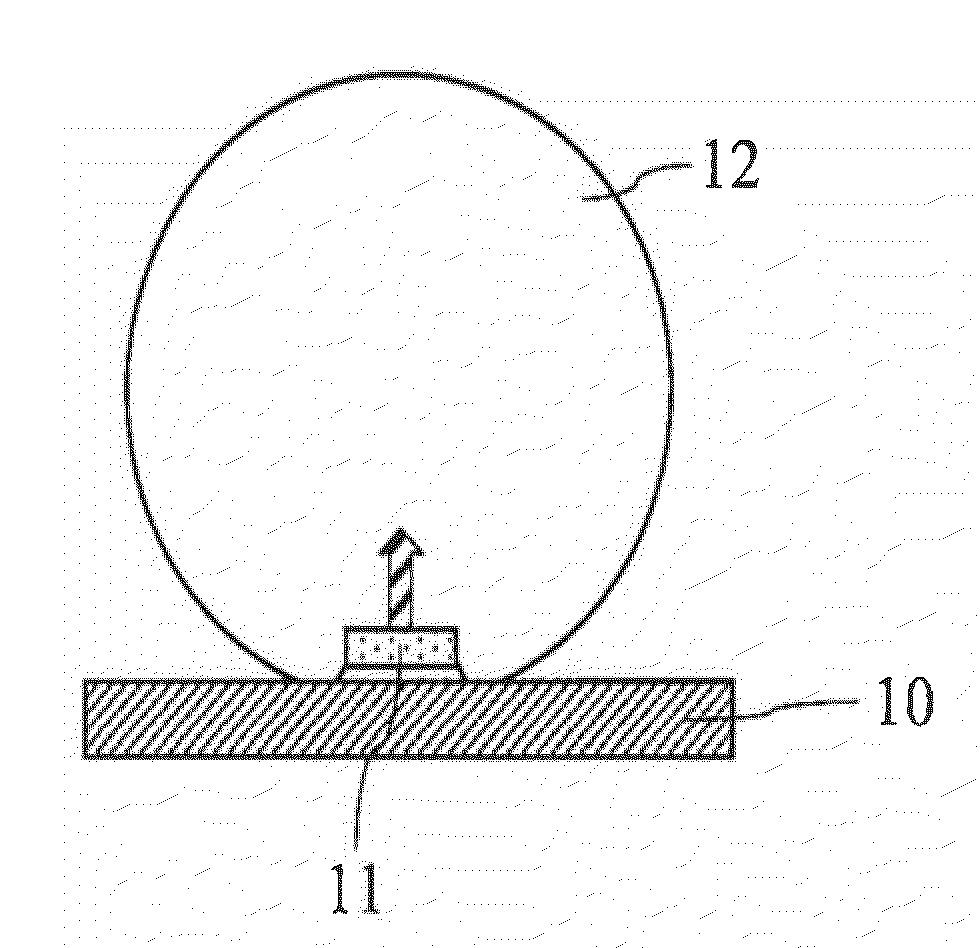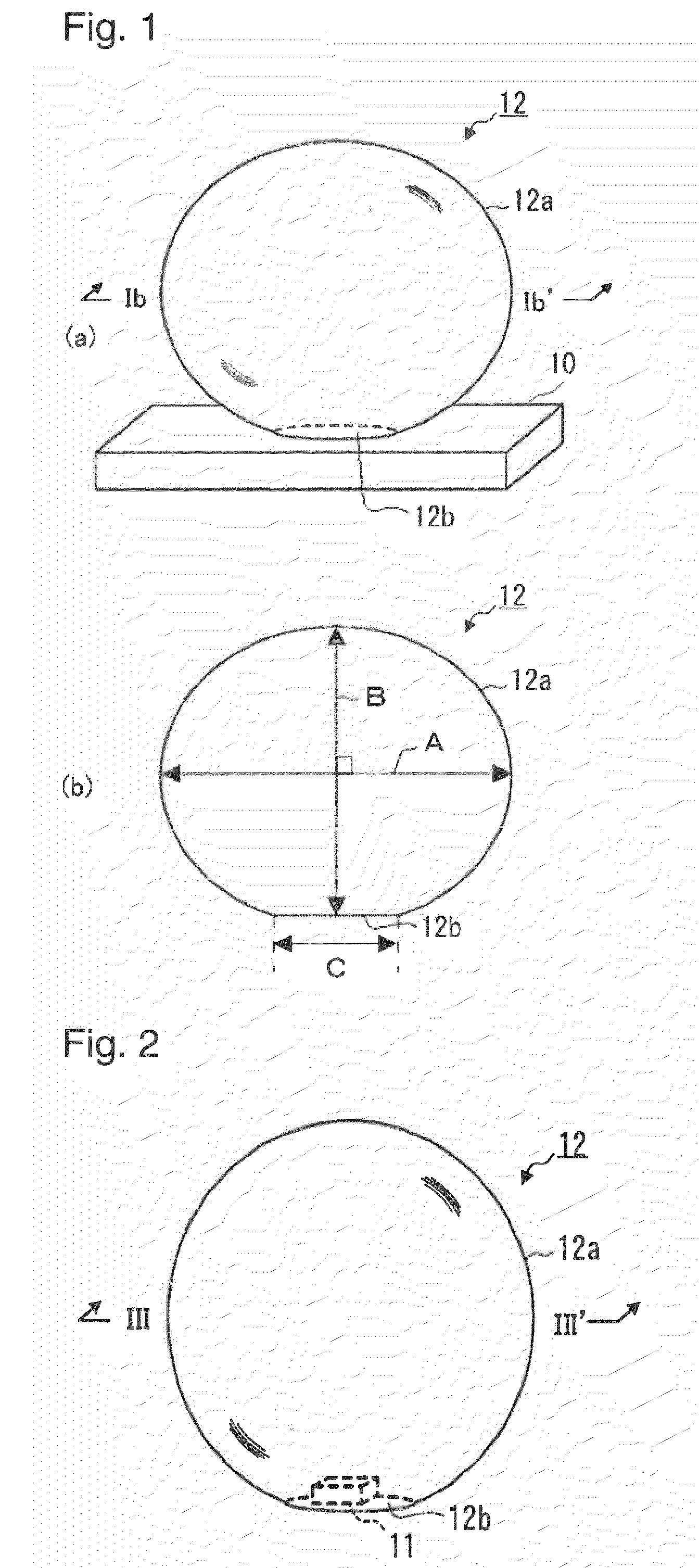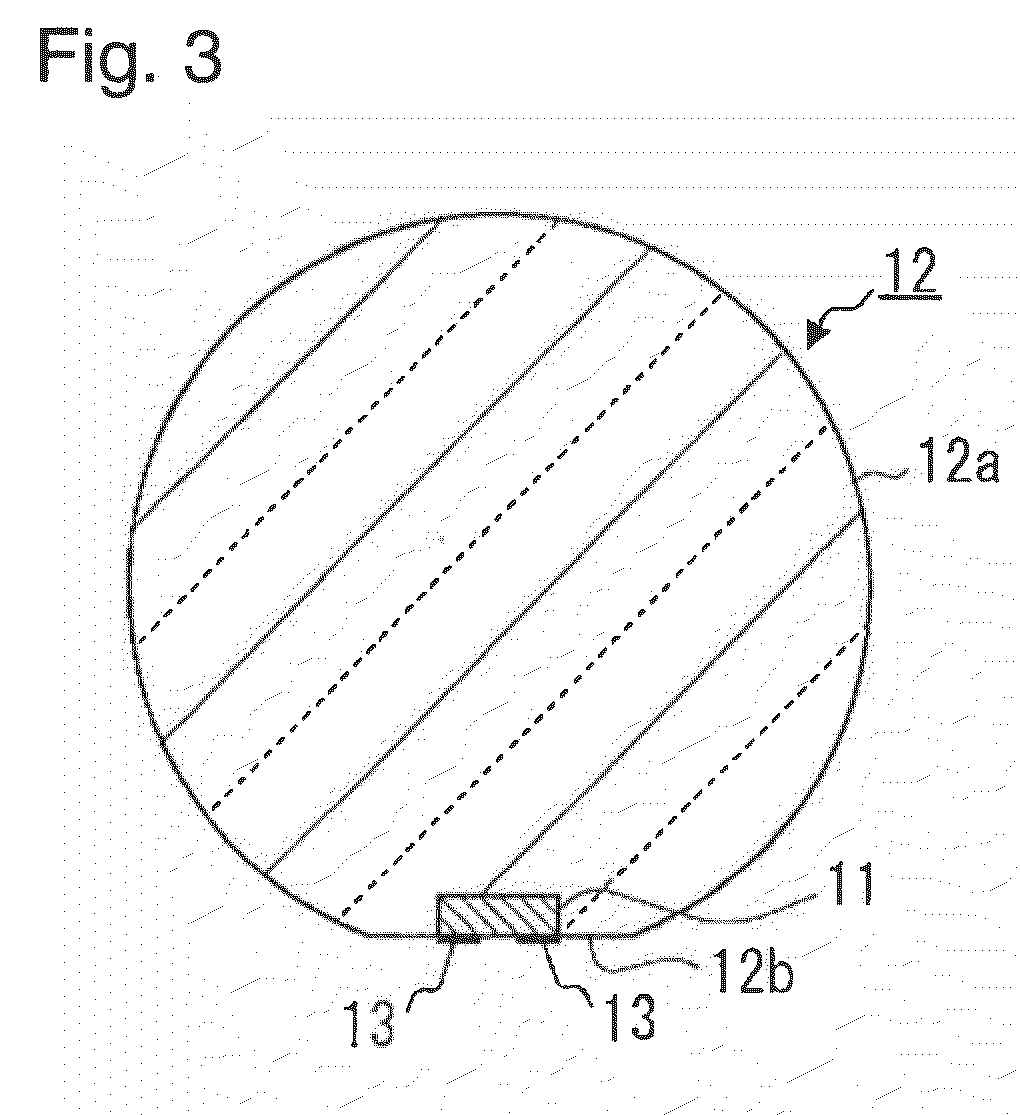Glass-sealed light emitting element, circuit board with the glass-sealed light emitting element, and methods for manufacturing those
a technology of light emitting element and glass shell, which is applied in the manufacture of electrode systems, electric discharge tubes/lamps, and discharge tubes luminescnet screens. it can solve the problems of silicone resins, silicone resins, and conventionally used sealing resins, and achieve excellent light resistance, reduce luminance, and improve the effect of light taking efficiency
- Summary
- Abstract
- Description
- Claims
- Application Information
AI Technical Summary
Benefits of technology
Problems solved by technology
Method used
Image
Examples
example 1
[0095]FIG. 8 is a flowchart showing an example of the fabrication process of the glass-sealed light emitting diode chip and the circuit board with the light emitting diode according to the present invention. FIG. 9 is a graph showing the history of a substrate temperature in the fabrication process.
[0096]First, a substrate with a releasing agent applied thereon was fabricated (Step S1). The substrate comprised a 6-inch silicon wafer manufactured by OSAKA TITANIUM, and boron nitride powder “Boron Spray” manufactured by KakenTech Co. Ltd. was sprayed as the releasing agent on the silicon wafer. The boron nitride powder was sprayed such that the silicon wafer surface was not seen. Next, a glass member for sealing was fabricated. The glass material for the glass member had a composition of TeO2 (45.0%), TiO2 (1.0%), GeO2 (5.0%), B2O3 (18.0%), Ga2O3 (6.0%), Bi2O3 (3.0%), ZnO (15%), Y2O3 (0.5%), La2O3 (0.5%), Gd2O3 (3.0%) and Ta2O5 (3.0%).
[0097]The rate “%” means “mol %”. The glass member...
example 2
[0109]After cullet comprising the same material as the glass material used in Example 1 was crushed in a mortar by a pestle, a yellow phosphor material “P46-Y3” manufactured by Kasei Optonix, Ltd. having a weight of 381 mg was mixed into the crushed cullet to obtain a phosphor-containing frit. The obtained phosphor-containing glass frit was divided into parts having a weight of 34 mg, the divided parts were heated at 610° C. for 15 minutes. The temperature-raising rate and the cooling rate were set at the same rates as those in Example 1. Thus, glass members were formed in a shape as shown in FIG. 1(a).
[0110]When light emitting diode chips and the above-mentioned glass members were put on a substrate coated with a releasing agent as in Example 1, light emitting diode chips were obtained, being sealed by glass members with phosphor dispersed therein. The turn-on voltage was 2.4 V, and white light emission was obtained.
[0111]Blue rays, which were emitted from a light emitting diode ch...
example 3
[0113]Boron nitride powder was sprayed, as a releasing agent, on an inner wall of a cylindrical pipe 53, which had an inner diameter 5.5 mm, a thickness of 0.5 mm and a height of 10 mm, and which was available under the tradename of Pyrex (FIG. 14(a)), and the pipe was put on a substrate 50, which had a light emitting diode chip carried thereon and was coated with a releasing agent. After that, a glass material containing the same composition as that of Example 1 and having a weight of 381 mg, was filled in the pipe 53, was heated and was cooled along with the chip. The pipe 53 and the substrate 50 formed a jig 54 for forming a glass member. The heating condition and the cooling condition were the same those of Example 1.
[0114]After cooling, a light emitting diode chip was obtained, being sealed with glass, which had a leading portion formed in a curved shape by surface tension as shown in FIG. 14(b). Reference numeral 51 designates the light emitting diode chip, and reference numer...
PUM
| Property | Measurement | Unit |
|---|---|---|
| refractive index | aaaaa | aaaaa |
| softening point | aaaaa | aaaaa |
| refractive index | aaaaa | aaaaa |
Abstract
Description
Claims
Application Information
 Login to View More
Login to View More - R&D
- Intellectual Property
- Life Sciences
- Materials
- Tech Scout
- Unparalleled Data Quality
- Higher Quality Content
- 60% Fewer Hallucinations
Browse by: Latest US Patents, China's latest patents, Technical Efficacy Thesaurus, Application Domain, Technology Topic, Popular Technical Reports.
© 2025 PatSnap. All rights reserved.Legal|Privacy policy|Modern Slavery Act Transparency Statement|Sitemap|About US| Contact US: help@patsnap.com



